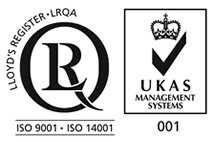
Main Products
Copyright 1998-2025 Firmetal Group All Rights Reserved. | Sitemap
The niobium-zirconium 10% target Nb-10Zr is a sputtering target made of an alloy composed of approximately 90% niobium and 10% zirconium. It is a key consumable material in physical vapor deposition (PVD) processes, especially in magnetron sputtering, used to deposit a layer of Nb-10Zr alloy film with specific functions on the surface of substrates such as silicon wafers, glass, metal parts, etc. Both niobium and zirconium are highly reactive metals, but a dense and stable oxide film (Nb2O5, ZrO2) forms on their surfaces, which endows them with extremely strong corrosion resistance, especially in acidic environments.
Using Nb-Zr10 target material, a dense Nb-10Zr film was deposited on the outer surface of zirconium alloy cladding tubes through magnetron sputtering technology. This film has several orders of magnitude higher corrosion resistance than the zirconium alloy itself in high-temperature and high-pressure water coolants. Under extreme accident conditions (such as the loss of cooling water), this coating can effectively prevent the zirconium alloy from undergoing intense oxidation reactions with high-temperature steam (hydrogen production), thereby significantly enhancing the safety of the reactor. Compared with pure niobium films, Nb-10Zr films have a higher superconducting critical current density and better mechanical properties, which can meet more demanding application requirements. This is currently the most cutting-edge, important and increasingly in-demand application field of Nb-10Zr target materials.
The production method of Nb-10Zr target materials usually adopts powder metallurgy or vacuum melting + forging/rolling process to prepare niobium-zirconium alloy ingots, and then through machining (turning, milling) to make target materials of specific sizes and shapes. Due to the high price of niobium-zirconium alloys, in order to reduce costs and ensure good thermal conductivity, a relatively thin target material is usually bound to a copper backsheet. Different sizes (such as diameter, length, thickness) and shapes (flat target, rotating target) can be customized according to the model of the sputtering equipment.
The uniformity of composition ensures that the composition of the sputtered film is consistent throughout. Fine and uniform grains are conducive to achieving a uniform sputtering rate and a smooth film surface. Niobium-zirconium 10% sputtering target is a kind of "thin film source" material for cutting-edge technological fields. It is not used to manufacture solid parts. Instead, through advanced surface engineering technology, a thin layer of Nb-10Zr alloy with extraordinary performance is "replicated" onto the surface of other materials, thereby endowing the base materials (such as nuclear fuel casings and engine blades) with unprecedented corrosion resistance, oxidation resistance and high-temperature stability.